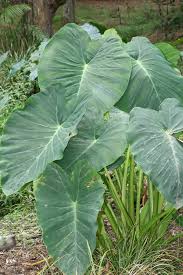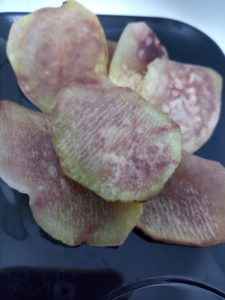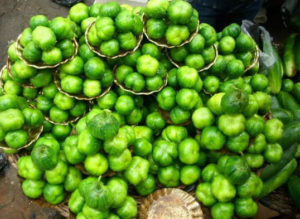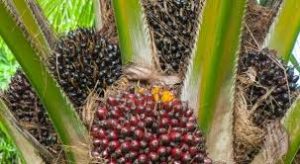There are many crops that we use as food in Nigeria. We value some of these Food crops because of just their leaves, fruits, seeds or stem. Among the abundance, there are some that we can get more value in terms of food. Many of them are under-utilized. By this, I mean that apart from the fruits of a plant, the leaves, stem or flowers are also valuable as food yet we do not use them. Here is a list of some of the Nigerian food crops that provide us with two or more edible raw materials:
1. Cassava

Cassava appears to be one of the most utilized crops in Nigeria. However, Nigerians mostly eat the Cassava starchy roots. It is used to make our local foods like Garri, Fufu, Lafun, Tapioca, Abacha, Starch. The leaves are actually also edible. Yorubas, Hausas and Igbos call Cassava leaves Ewe Ege, Ganyen Rogo and Akwukwo Aku respectively.
The leaves are very nutritious and particularly contain an appreciable amount of protein and micronutrient content. A popular delicacy called Saka saka or Pondu is made from the Cassava leaves and it is eaten in many central African countries.
Unfortunately, cassava leaves are not consumed widely in Nigeria and are used either for animal feed or become waste. There have been news reports in the past years that the government is considering exporting the leaves outside the country.
There are many other parts of the Cassava plant that can be used in the food and agro-allied manufacturing industries. E.g. Ethanol, bio-diesel.
2. Sweet potatoes

The starchy yet sweet tuberous roots are often used in different recipes across the country. They are also great for a baby’s first semi-solid meal at 6 months. The orange fleshed variety is gradually becoming popular in Nigeria and it is being promoted specifically because of its high beta-carotene content (Vitamin A).

The leaves however are not so popular but are delicious to eat. The leaves are called Ewe Anamo by the Yoruba, Akwukwo Nduku by the Igbo and Ganyen Dakali by the Hausa. Sweet potato leaves are super rich in Vitamins especially the B6, C, and B2. Although the leaves of sweet potatoes can be a bit bitter, it is not as bitter as Kale. They can be cooked like spinach and they are eaten in Malaysia, Taiwan and some other Asian countries.
3. Cocoyam

All parts of the cocoyam plant – leaves, roots, stems – are edible. This being said, the cocoyam is mostly grown for its starchy roots. It is used to make stiff porridges (swallow), pottage, and soups. Delicacies like Oha soup, bitter leaf soup, Ekpan Nkwukwo, Epiribo feature cocoyam in its recipes.

Cocoyam leaves (Ewe koko, Ganyen gwaza, Akwukwo Ede) are also edible. The most popular dish (perhaps one of a few) featuring the cocoyam leaves is the Ekpan Nkukwo. Utilization of the leaves is still very low.
4. African Yam bean


This is an under-utilized food crop in Nigeria. This is not a common food crop in Nigeria but it is worthy of mention because of its potential. The African Yam bean produces both a legume – beans and a tuberous root – yam. It is so unpopular that it cannot be found easily in most urban markets.
The African yam bean is said to have high amino acid content compared to cowpea, pigeon pea and Bambara groundnut. This crop would be particularly useful in reducing malnutrition and can be a food security crop. Unfortunately, it might be on the endangered list and the danger of it being extinct is not impossible.
5. Garden egg


Garden egg is a traditional fruit used in traditional activities as well as an everyday fruit in Nigeria. It contains a lot of phytochemicals that are beneficial to the health. Apart from the fruit, the leaves (Igbo, Yalo, Mkpuru anara) are also a delicacy. A popular use of the garden egg leaves is the Egusi soup with garden egg leaves.
6. Amaranthus leaves

Tete, Inine, Aleyefo as the Amaranthus is called in Nigeria is one of the most popular vegetables in Nigeria.
The seeds can also be utilized as a cereal. They can be popped or ground into flour. Popped amaranth seeds are a great snack with lots of nutrients.
7. Baobab

Miyan Kuka (Boabab soup) is a popular dish from the North of Nigeria. It’s made from the dried and powered Baobab leaves. The fruits are also are also consumed.
8. Horse radish tree/drumstick tree

This is the popular moringa leaves. The other names for Moringa are Horseradish tree and drumstick tree. Moringa tree is popular for both its leaves and seeds particularly by the Northerners in Nigeria. The seeds and supplements are becoming popular all over Nigeria however the leaves are not that consumed. The pods along with the seeds can also be eaten and are used to make curry while the flowers are also not left out.
9. Oil Palm tree


This is a cash crop that produces two different types of oils and a nut. The palm oil tree produces palm oil, palm kernel and palm kernel oil which is very different from palm oil in composition. Palm oil contains about 50% saturated fatty acids while Palm kernel Oil contains 80% saturated fats and it has many similarities with coconut oil.
While palm oil is one of the most popular cooking oils in Nigeria, the palm kernel oil is not as popular.
10. African Black Pepper/Uziza

The African black pepper plant produces the black pepper seed that is a popular spice for African cuisine. The leaves are also used in flavouring soups in Nigeria. The Uziza pepper contains piperine and other phytochemicals that are anti-inflammatory agents. The leaves are most popular in the southern part of Nigeria.
In a nutshell, we have a rich biodiversity in Nigeria. We have food crops that we can cultivate and get the most out of. It is a shame that malnutrition has plagued Nigeria for many years despite this rich resources that we have (of course there are many factors that have a role to play).
I hope that this article will inspire you to utilize more of our Nigerian crops. When you buy Nigerian foods, you put money into the hands of farmers, your promote their business and they enhance your nutrition. When you increase the variety of your meals, you give yourself access to more nutrients and thus better health.
Eat better, live better.



Yeside, thanks a bunch for this valuable info, especially info about the African Yam Bean. I wasn’t aware of this crop in Nigeria, but now I think we can work to ensure it doesn’t become extinct.
Wow I love this article. I didn’t know some of these things are edible and ddnt know some even exist especially the African yam-bean.. thanks so much for the information